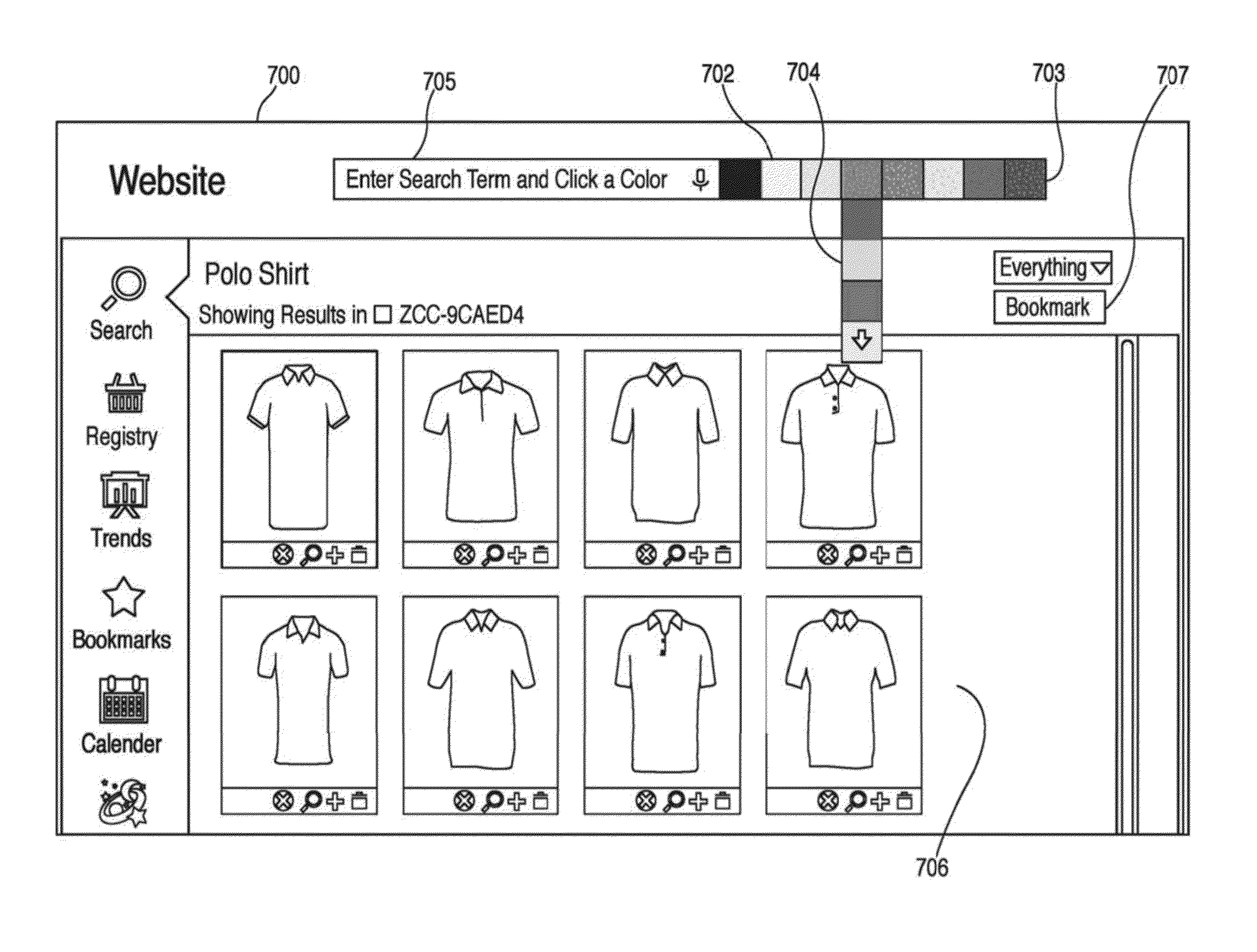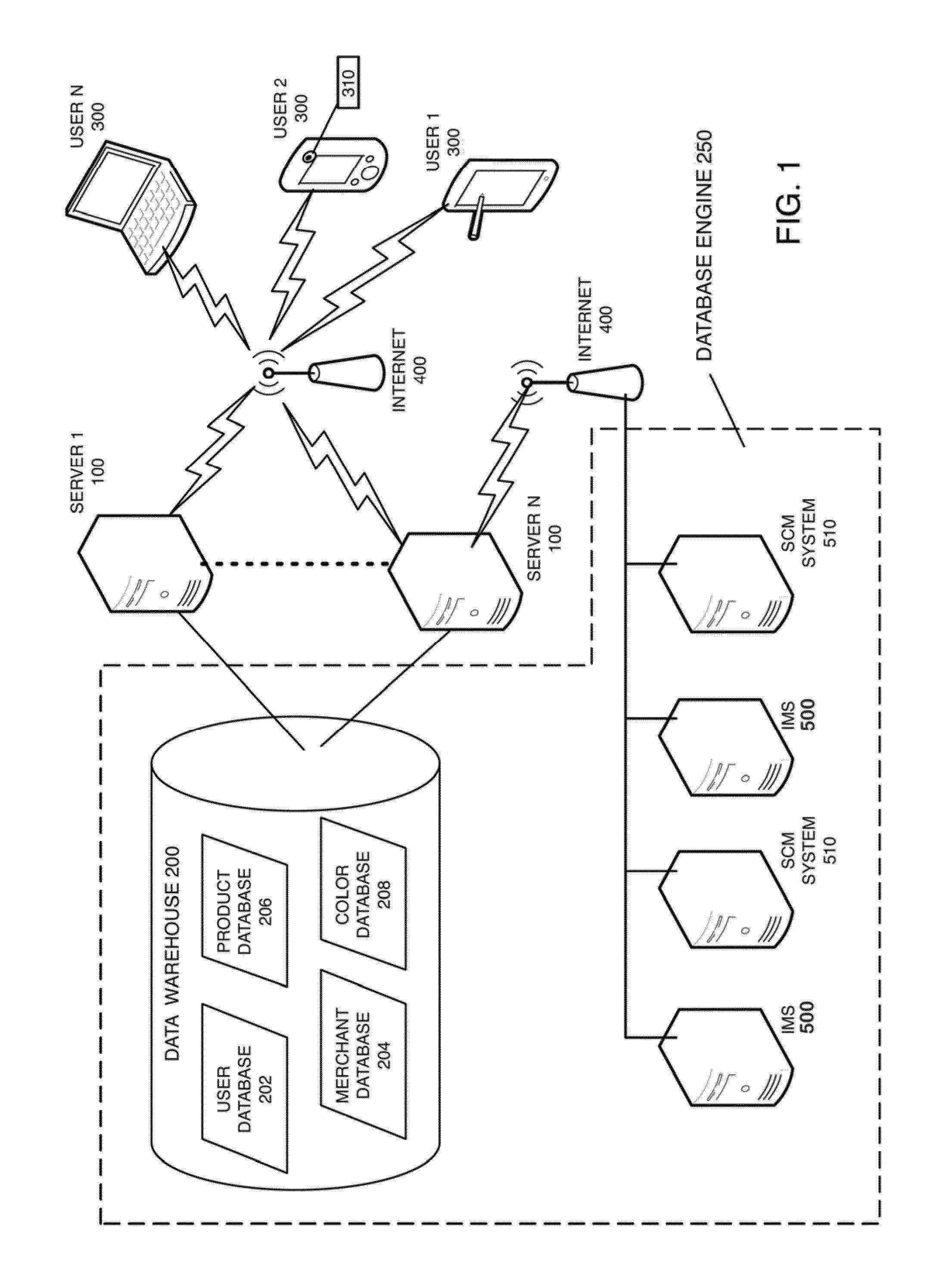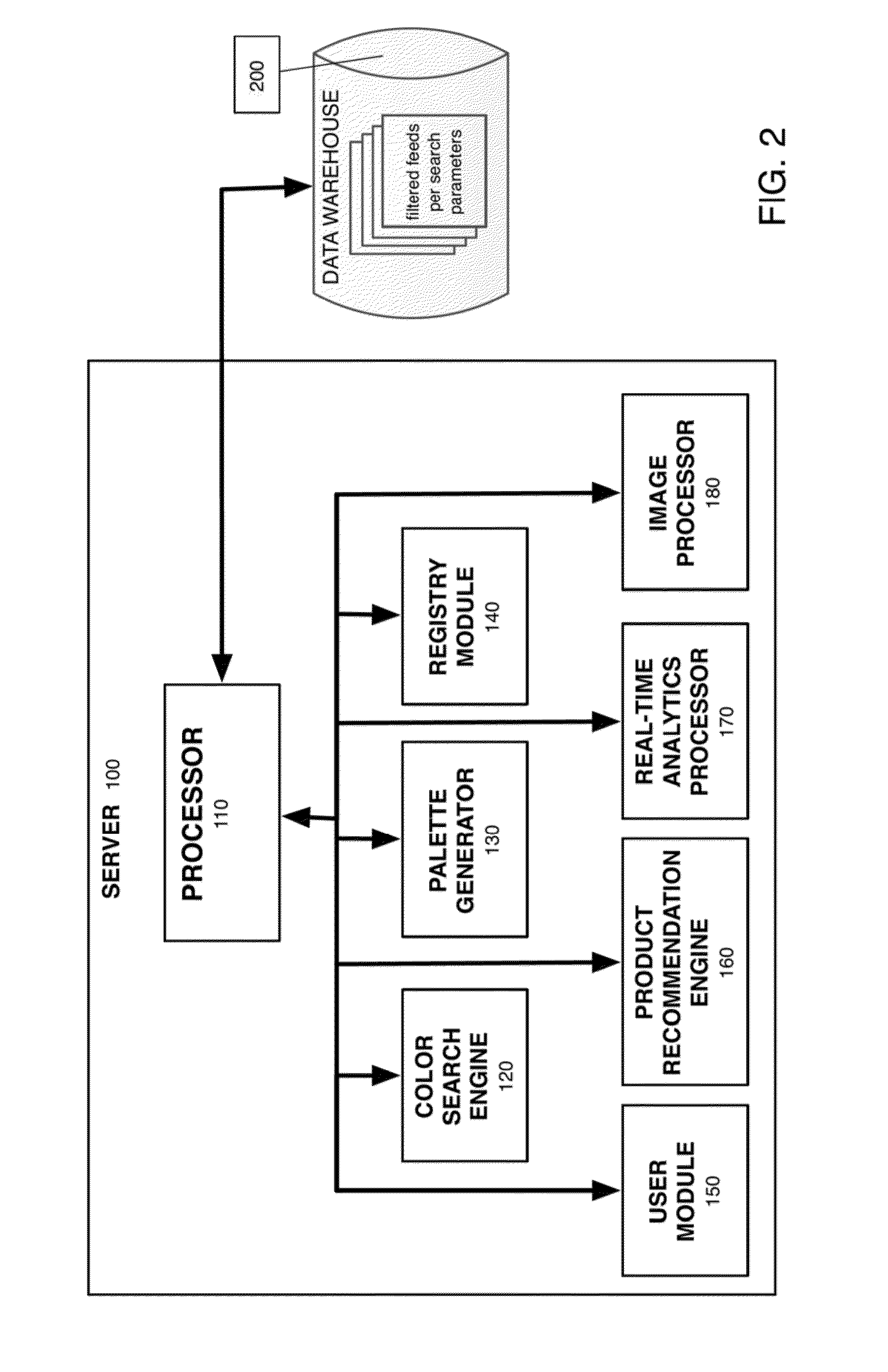System for normalizing, codifying and categorizing color-based product and data based on a univerisal digital color language
a color language and color-based product technology, applied in the field of digital color-based categorization for data analytics, can solve the problems of virtually impossible to obtain reliable and complete search results when seeking specific color shades, and the search for patterns made of colors is extremely difficul
- Summary
- Abstract
- Description
- Claims
- Application Information
AI Technical Summary
Benefits of technology
Problems solved by technology
Method used
Image
Examples
Embodiment Construction
[0064]In accordance with an exemplary embodiment of the claimed invention, non-textual color-based systems and interfaces are provided to categorize, normalize and dynamically analyze color-based product and data based on a unified or universal color system as described in applicant's U.S. application Ser. No. 13 / 910,557 (now U.S. Pat. No. 8,600,153), pending U.S. application Ser. No. 14 / 055,884 and pending international Application No. PCT / US13 / 44317 (hereinafter collectively referred to herein as “applicant's normalization / codification application”), each of which is incorporated herein by reference in its entirety. To categorize and analyze massive amounts of data across a diverse range of product categories requires a common denominator or attribute that all products have in common. Color is that common denominator provided that all colors have been reverse mapped from divergent color systems, normalized and converted into a universal color (or digital color) system, as exemplar...
PUM
 Login to View More
Login to View More Abstract
Description
Claims
Application Information
 Login to View More
Login to View More - R&D
- Intellectual Property
- Life Sciences
- Materials
- Tech Scout
- Unparalleled Data Quality
- Higher Quality Content
- 60% Fewer Hallucinations
Browse by: Latest US Patents, China's latest patents, Technical Efficacy Thesaurus, Application Domain, Technology Topic, Popular Technical Reports.
© 2025 PatSnap. All rights reserved.Legal|Privacy policy|Modern Slavery Act Transparency Statement|Sitemap|About US| Contact US: help@patsnap.com



